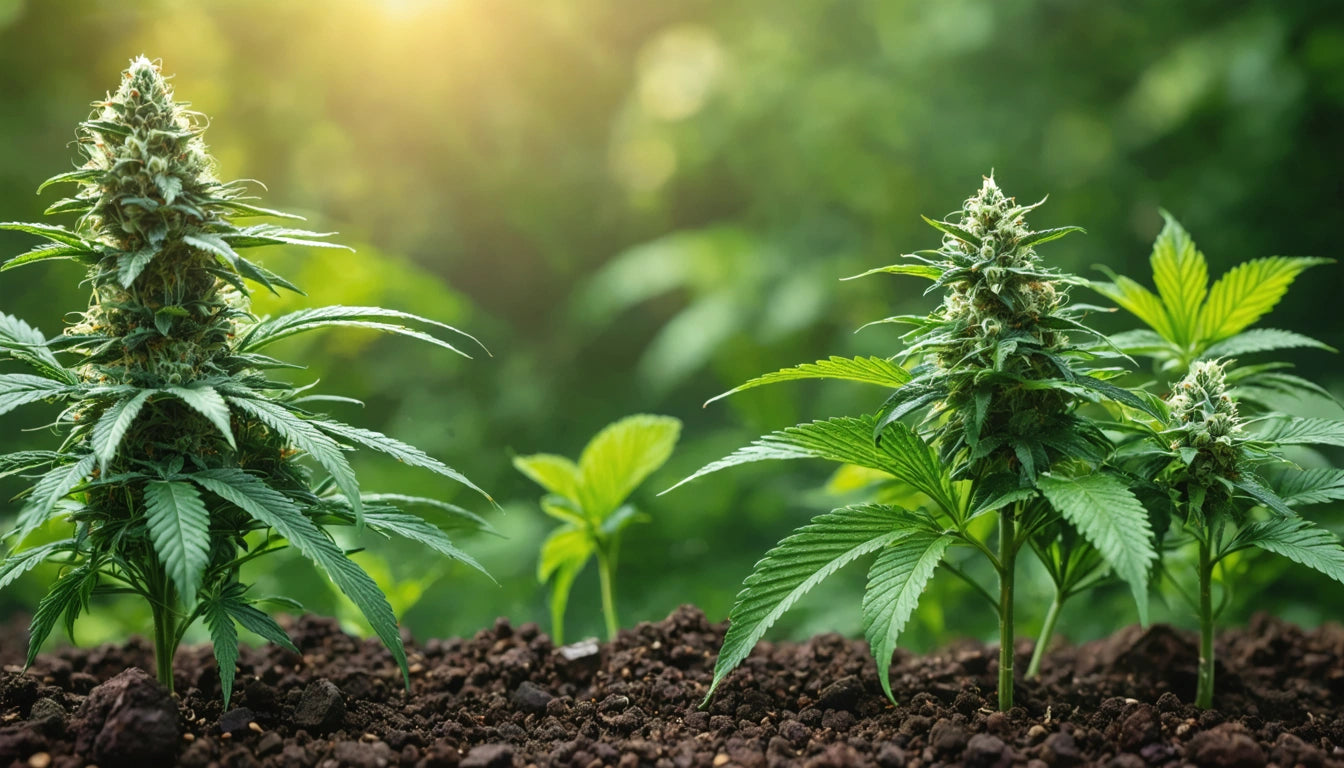Table of Contents
- Benefits of DIY Grow Tents for Cannabis Cultivation
- Materials Needed for Building Your DIY Grow Tent
- Step-by-Step Construction Guide
- Lighting Setup for Optimal Growth
- Ventilation and Humidity Management
- Common DIY Solutions for Grow Tent Challenges
- Comparing DIY vs. Commercial Grow Tents
- Advanced Customizations for Experienced Growers
DIY Grow Tents: The Ultimate Guide to Growing Cannabis Indoors
Creating your own grow tent for cannabis cultivation combines cost-effectiveness with customization potential. Whether you're a beginner looking to start growing or an experienced cultivator seeking to expand your operation, building a DIY grow tent can provide an ideal environment for your plants while saving money compared to commercial options.
Benefits of DIY Grow Tents for Cannabis Cultivation
DIY grow tents offer several advantages over pre-made commercial options. First, they can be significantly more affordable, with some growers reporting savings of 50-70% compared to retail grow tents. Second, you can customize dimensions to fit your specific space constraints. Third, you can modify and upgrade components as your needs evolve without purchasing an entirely new setup.
When considering how to set up the best grow tent for beginners, DIY options allow for gradual investment as you learn what works best for your particular growing style.
Materials Needed for Building Your DIY Grow Tent
To construct a basic DIY grow tent for weed, you'll need:
- Frame materials: PVC pipes and connectors, wood boards, or metal shelving units
- Reflective material: Mylar sheets, reflective insulation, or even emergency blankets
- Light-blocking exterior: Black/white poly film, canvas, or heavy-duty tarps
- Ventilation components: Inline fans, ducting, and carbon filters
- Fasteners: Zip ties, duct tape, velcro strips, and grommets
- Storage solutions: For harvested plants, light-proof storage bags with moisture barriers are essential for preserving potency and freshness
The total cost for these materials typically ranges from $50-150 depending on the size and quality of components, compared to $200-500 for comparable commercial tents.
Step-by-Step Construction Guide
1. Building a PVC DIY Tent Frame
PVC pipe is the most popular material for DIY grow tent frames due to its affordability, availability, and ease of assembly:
- Measure and cut PVC pipes according to your desired dimensions
- Connect pipes using PVC corner fittings and T-connectors
- Ensure the frame is stable by testing it before adding covering materials
- For larger tents, add cross-supports to prevent sagging
2. Creating Light-Proof Walls
Light-proofing is critical when learning how to grow marijuana in a grow tent:
- Wrap the exterior with black/white poly film (white side in)
- Seal all seams with duct tape or heavy-duty staples
- Create a door flap using velcro strips or a zipper kit
- Test for light leaks by entering the tent during daylight and looking for any visible light
3. Adding Reflective Interior
Maximizing light efficiency is key to successful indoor growing:
- Line the interior walls with mylar sheeting or reflective insulation
- Secure the reflective material with tape or staples
- Smooth out wrinkles to prevent hotspots
- Consider using reflective floor coverings as well
Lighting Setup for Optimal Growth
Lighting is perhaps the most critical component when learning how to grow weed in a grow tent. For a DIY setup:
- LED grow lights: Most energy-efficient option with lower heat output
- HPS/MH systems: Traditional option with proven results but higher heat and energy usage
- CFL setups: Budget-friendly for smaller grows or seedlings
When mounting lights in a DIY tent, create a secure hanging system using hooks, chains, or adjustable rope ratchets attached to the upper frame. This allows for height adjustments as plants grow.
For guidance on complete growing systems, this resource on best grow kits for weed provides valuable insights on lighting requirements.
Ventilation and Humidity Management
Proper air exchange and humidity control are essential for preventing mold and optimizing growth in any DIY weed grow tent:
1. Ventilation System Setup
- Install an inline fan (4-6 inch for small tents, 8+ inch for larger spaces)
- Connect ducting to create intake and exhaust pathways
- Add a carbon filter to eliminate odors
- Create passive intake vents at the bottom of the tent
2. DIY Dehumidifier for Grow Tent
Controlling humidity is crucial, especially during flowering. Some DIY options include:
- Calcium chloride dehumidifiers (using moisture-absorbing crystals in containers)
- Small computer fans to improve air circulation
- Strategically placed containers of silica gel or activated charcoal
For more advanced climate control strategies, this guide on optimizing climate control provides detailed information.
Common DIY Solutions for Grow Tent Challenges
Even the best grow tent for weed can face issues. Here are DIY solutions to common problems:
- Heat management: Create additional ventilation ports or add small circulation fans
- Humidity fluctuations: Use DIY humidity trays (shallow containers filled with water and pebbles)
- Light leaks: Apply additional layers of light-blocking material or use automotive weather stripping for seams
- Odor control: Enhance carbon filtration with DIY odor absorbers using activated charcoal
Comparing DIY vs. Commercial Grow Tents
When deciding between DIY and commercial options:
| Feature | DIY Grow Tent | Commercial Grow Tent |
|---|---|---|
| Cost | $50-150 | $200-500+ |
| Customization | High | Limited |
| Setup Time | 3-6 hours | 30-60 minutes |
| Durability | Variable | Generally higher |
| Light-proofing | Requires careful sealing | Usually excellent |
| Portability | Limited | Often designed for disassembly |
For those uncertain about the DIY route, this comprehensive guide for beginners can help determine if commercial tents might be more suitable for your needs.
Advanced Customizations for Experienced Growers
As you gain experience with how to grow weed in grow tent environments, consider these advanced modifications:
- Multi-chamber designs: Create separate vegetative and flowering areas within one DIY structure
- Automated systems: Integrate DIY irrigation, temperature controls, or lighting timers
- Specialized areas: Build in clone chambers or drying spaces
- Mobile designs: Add wheels to the base for repositioning flexibility
These customizations allow your DIY cannabis grow tent to evolve with your cultivation skills, potentially surpassing the capabilities of commercial alternatives while maintaining cost efficiency.
Whether you're just starting out or looking to expand your growing operation, DIY grow tents offer a flexible, economical approach to indoor cannabis cultivation that can be tailored precisely to your needs.











Leave a comment
All comments are moderated before being published.
This site is protected by hCaptcha and the hCaptcha Privacy Policy and Terms of Service apply.